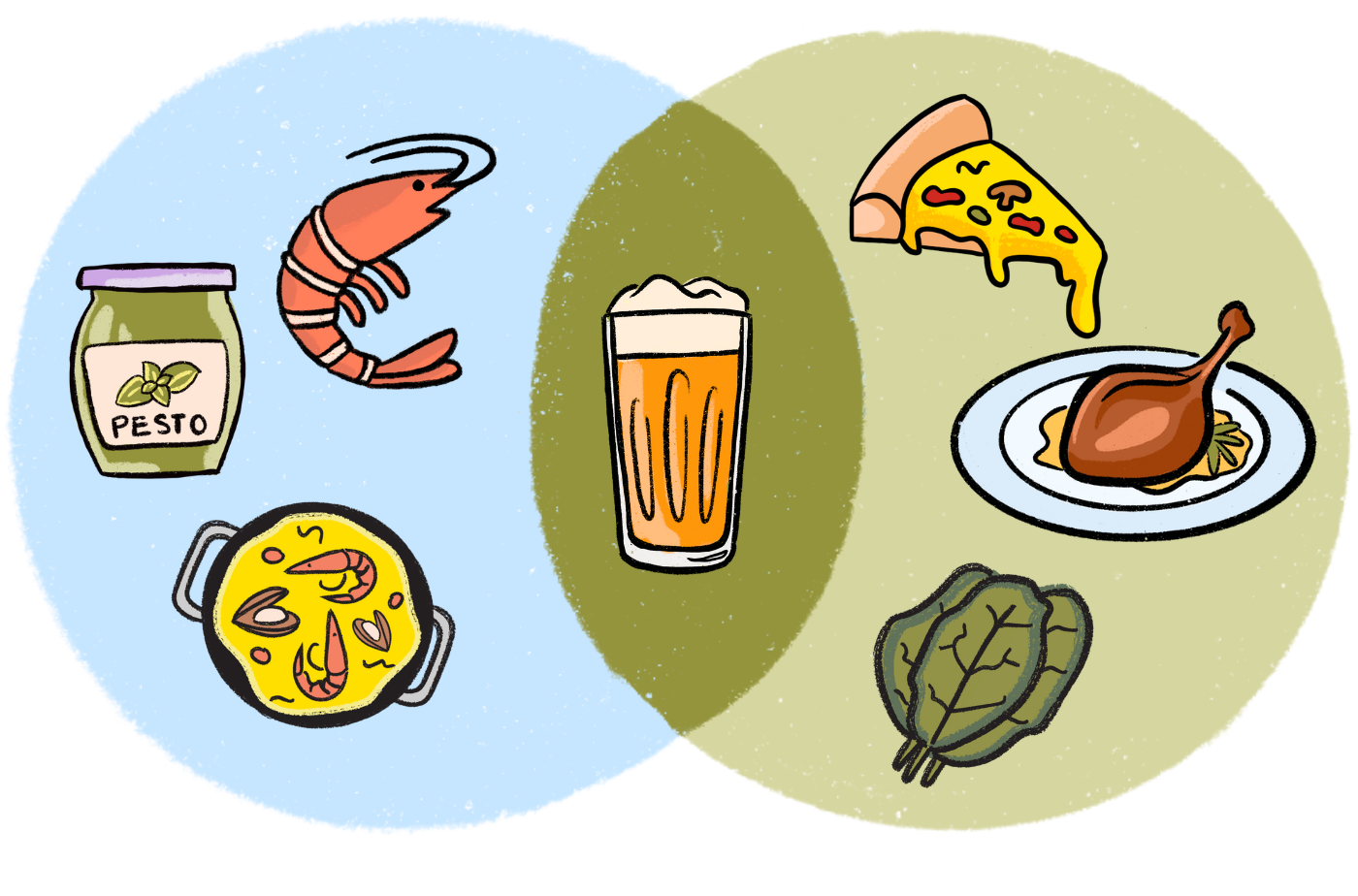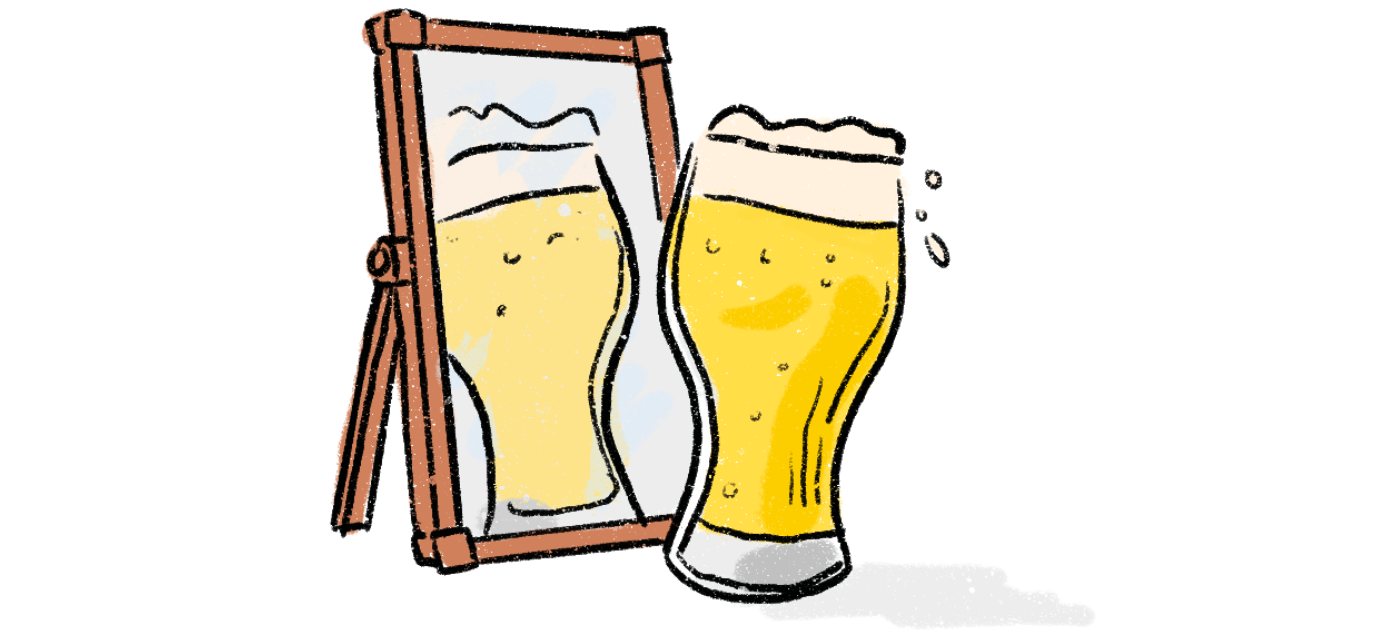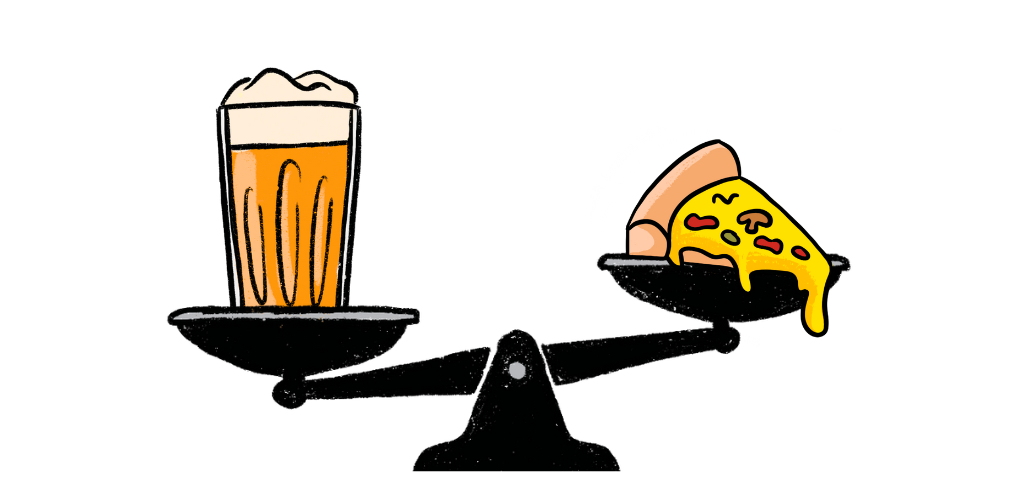

Beyond burgers and fries...
After a long and hard day, there are few greater things than an ice-cold beer. A little beery magic to make everything brighter! But what if we want a beer to have over dinner/brunch/second dinner?
We now (happily) live in a world where beer comes in a kaleidoscope of styles, colours and flavours, ranging from something close to alcoholic water to a bizarre Scottish beer/whisky hybrid called Snake Venom (it's 67% alcohol!). With such a smorgasbord of brews, we can surely find food and beer pairings that work, especially if we follow some key concepts.

Choose like with like--burger
We sometimes call this 'flavour bridging' and it's a concept that works across wine, beer and spirit food pairing. You want to match congruent flavours to each other - so a decadently rich Stout works perfectly with a hearty, meaty stew. Similarly, a Pilsener's clean, gently herbaceous citrussy notes are near perfect with a plate of grilled prawns. If you can taste the flavour in a beer, then choose the same one in your dish.
Talking about the beer in the mirror--cellar
The other side to any beer and food pairing equation is palate weight and matching intensities. A light-coloured, light-bodied lager is typically best served with light-coloured and light-flavoured dishes (seafood, salad, white meat, rice etc). Then, as the beer gets darker and heavier (hello Dark Ale, Porters, Bock, et al.), so does the need for fuller-flavoured food, including roasted meat/vegetables, BBQ, rich tomato-based pasta, hearty bean dishes and the like.

A little contrast--racy
One of the unsung heroes of the beer-pairing world is bubbles themselves. Carbonation offers a softness and sweetness that can help cut through spice and fatty foods (you can try that with tap water vs fizzy if you're interested) as something of a contrast. Our other pairing friend in the beer recipe is hops, with the bitterness from these magical flowers a glorious contrast to sweetness, saltiness (umami) and fatty richness. An often-forgotten but truly glorious component of some beer styles is sourness/raised acidity. Sour beer styles, especially when done well, can often offer excellent contrasts, with sourness a superstar foil for sweet flavours (which is why so many sour beers have fruit in the blend).

The spice test--pizza
Spicy food and beer = yes, please! But you need to tread carefully here. Hoppy aromatics, for example, can also help to accentuate spiciness in dishes, but the bitterness they bring can be problematic (hot chillies and hoppy but lean and bitter India Pale Ale are a giant clash, FWIW). Sweetness in a beer is a better choice for your spicy dishes, whether from roasted malt (like in a rich dark ale), hazy juiciness (like in a cloudy NEIPA), or extra ingredients like fruit or oats.
What about chocolate?--vegan
Chocolate is famously hard to match with wine, especially given the bittersweet layers that cocoa and sugar contribute. But beer is up to the task! Stout is the most obvious choice, especially the Milk Stout style that packs the creamy sweetness of lactose. Or the lusciousness of a German Doppelbock with its boozy generosity. More broadly, any rich dark beer is up to the task, and to the point where plenty of modern beers include chocolate as an ingredient, because why not?

The classic beer pairings--burger
Pilsener and prawns
As we covered above, you don't need to stick to Pilsener here—any clean lager will do, and most grilled seafood is a working alternate.
Stout and chocolate
Also covered above, and feel free to go off-piste for other rich dark beer choices!
Pizza and Pale Ale
This is a great pair, with the hoppy bitterness cutting through the oily pizza and a little froth to liven things up. Also any hoppy ale will work here, or a bitter style of lager.
Dark Ale and roast pork
Not just pork but any roasted white meat and vegetables can stand up to the task here, with the lightly caramelised roasted flavours picking up the gentle caramelly richness of Dark Ale styles (like English Dark Ale, Red Ale or even Dark Lagers). Extra style points for traditional German dark beer (like a Dunkel) and traditional German roast pork dishes (hello Schweinebraten)
Wheat beer and fresh salad (with dressing)
A surprisingly great pair! It's all about the contrasts here, with crunchy salad and tangy vinegar dressing contrasting with the gentle roundness of a classic Belgian/German-style wheat beer.

The pairings that shouldn’t work--lemon
Dry Stout and oysters
This is such a strange combo (that is said to date back to London in the 1800s), but it works. You want a less sweet stout style to give a bitterness that contrasts perfectly with the briny, surprisingly creamy oysters.
IPA and lemon sorbet spiders
Sure, there is a Coke spider (where you put a scoop of ice cream into a Coke), but have you tried an IPA spider? This only works with lemony/citrus gelato (ideally sorbet as it's less creamy), as the beautiful sweet/sour citrusy tang accentuates the hoppy fragrance and bitterness. Small doses, but great!
With beer pairing there are no rules..--plum
Ultimately, pairing food and beer is so personal that you should creatively experiment for yourself (which is also great fun). Get your favourite dish, then line up a range of likely (or unlikely) beers and see what goes. We almost guarantee there will be surprises!
P.S. Don't miss Banjo's take on wine and food pairing for another take on these concepts!
Andrew Graham is a master winemaker and viticulturist (aka a grape guy) who fell into the wine industry as a beer-loving teenager and never looked back! Voted the 23rd most trusted wine critic on the planet, Andrew judges at wine shows across the globe and runs foolishly long ultramarathons in his spare time (swiftly followed by a recuperative glass of wine/frosty beer)
Do you know your wine personality? If your answer is no, take our quiz to find out which wines to pick up next and build your box!
Build my box





